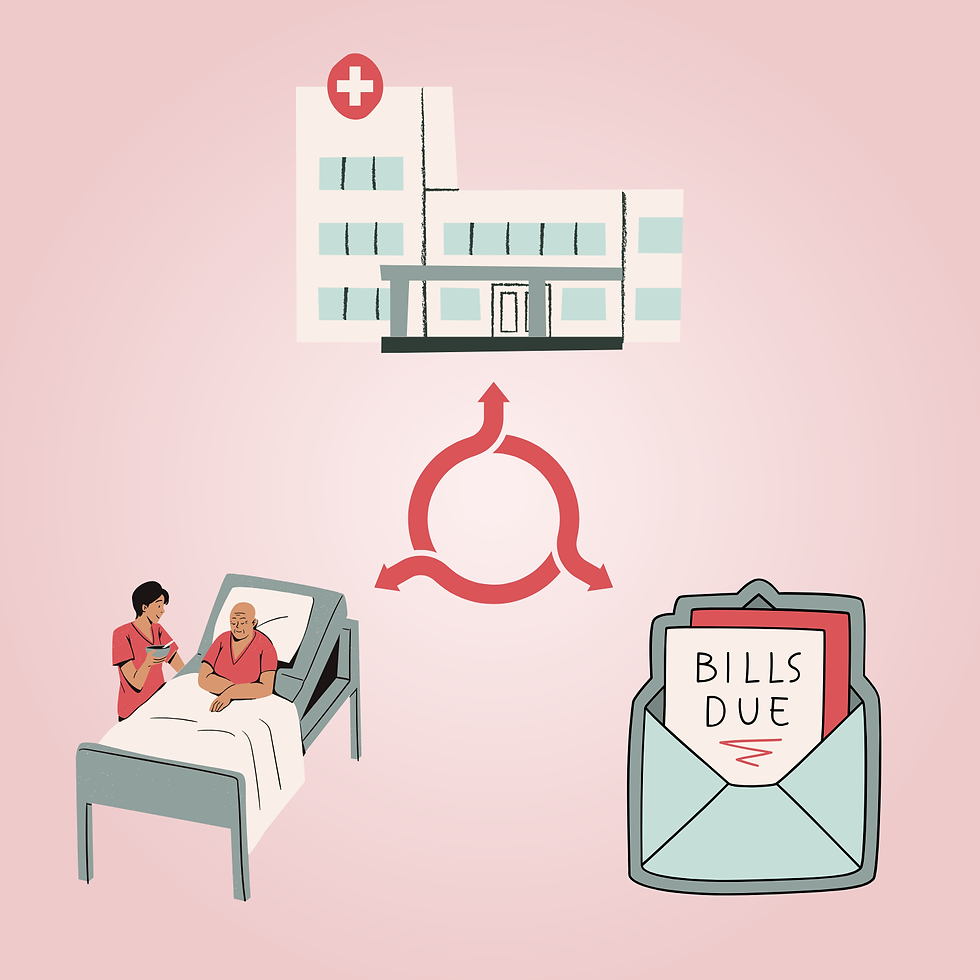Detention of Pregnant Women at the US-Mexico Border
- Eric Wang
- Apr 1, 2023
- 3 min read
Every year, thousands of migrants are detained at the US-Mexico border, of which a small proportion are pregnant women. However, this proportion has significantly increased throughout the past decade and continues to be a significant problem today. The U.S. Immigration and Customs Enforcement (ICE) and Removal Operations reported that pregnant women accounted for roughly 0.3% of all detainees (965 detainees) in 2008, which had risen to roughly 0.4% (1377 detainees) and 0.5% (2094 detainees) in 2016 and 2018, respectively. Although these proportions may not be very large, the sheer number of mothers affected is cause for concern. Furthermore, investigations have found evidence of frequent mistreatment and abuse in ICE detention centers and U.S. Immigration Facilities, leading to miscarriages, adverse birth outcomes, and serious physical and mental impacts on the mothers (Immigration Detention: Care of Pregnant Women in DHS Facilities, 2021).

In 2018, the Trump administration gave immigration authorities full jurisdiction regarding the detainment and detention of pregnant women when they did away with presumptive release guidelines that required all pregnant detainees to be immediately released under another federal law or when deemed a national security threat. As a result, the number of detained pregnant individuals nearly doubled, decreasing available resources at facilities and posing serious health risks for expectant mothers and their babies. Although the Biden Administration has reimplemented presumptive release guidelines through executive order, it has failed to address numerous reports of inadequate and improper care at border facilities. (U.S. Immigrations and Customs Enforcement, 2017).
For example, while Customs and Border Protection (CBP) policy explicitly prohibits detention of individuals longer than 72 hours, an American Civil Liberties Union (ACLU) report found that pregnant women are regularly held beyond this limit and experience improper living conditions, verbal abuse, poor medical care, and even separation from their newborns (ACLU, 2020). Additional investigations by Human Rights Watch revealed CBP admitting to being unable to provide sleeping mats, basic hygienic products, and clean food and water. Furthermore, families are often separated when adults and children are held in different cells, which has adverse mental and physical effects on the childrens’ well-being (Rabin, 2009). In some cases, this mistreatment has become inhumane: detainees have reported being denied breast pumps and being shackled during labor despite physician orders, which patients have described as horrifying and causing feelings consistent with post-traumatic stress disorder (Preston, 2008).
The United States has long stated its commitment to uphold principles of basic human rights, yet such reports of mistreatment of pregnant migrants have persisted for decades. The Biden Administration’s Executive Order significantly reduced many detentions of pregnant women, yet the lack of consistent health standards has made additional progress difficult (Spiegel, 2019). While rewriting health standards may have some impact, the lack of accountability and oversight of US Immigration Centers and ICE-CBP officers further complicates matters.
Immigration policy has been the center of a long political debate. However, the humane treatment of detainees and asylees—especially pregnant women—should not be controversial. As the United States pursues new immigration policy, it is crucial that there is a focus on the proper treatment of pregnant women, who are experiencing one of the most vulnerable and risky periods of their lives and require sufficient medical care. Ensuring the safe and respectful treatment of pregnant women at the border is not only a moral obligation, but a necessary step towards building a just and compassionate immigration system.
Edited by: Reena Kagan
Graphic Designed by: Simone Nabors
References
ACLU. (2020, January 22). ACLU of San Diego and Imperial Counties. https://www.aclu-sdic.org/wp-content/uploads/2020/01/2020-01-22-OIG-Complaint-1-FINAL-1.pdf
Immigration Detention: Care of Pregnant Women in DHS Facilities. (2021, April 21). U.S. GAO. https://www.gao.gov/products/gao-20-330
Preston, J. (2008, July 19). Immigrant, Pregnant, Is Jailed Under Pact. The New York Times. https://www.nytimes.com/2008/07/20/us/20immig.html
Rabin, N. (2009). Unseen Prisoners: A Report on Women in Immigration Detention Facilities in Arizona. Social Science Research Network.
Spiegel P, Kass N, Rubenstein L. Can Physicians Work in US Immigration Detention Facilities While Upholding Their Hippocratic Oath? JAMA. 2019;322(15):1445–1446. doi:10.1001/jama.2019.12567
U.S. Immigrations and Customs Enforcement. (2017, December 14). ICE Directive 11032.3: Identification and Monitoring of Pregnant Detainees [Press release]. https://immpolicytracking.org/policies/ice-ends-presumption-of-release-for-pregnant-detainees/#/tab-policy-documents



Comments